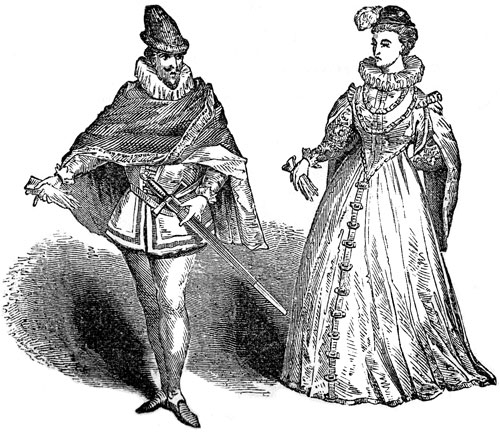We always imagine the future as being something like the present, only more so. In the 50s, the future was going to be the 50s -- with flying cars. In the 70s, it was going to be sex, drugs, and rock-n-roll forever. But an age is not defined by its gadgets. Even if we one day get our flying cars, they will not make that age like the gung-ho, white-bread, techno-worshiping 50s. Sorry, Jetsons. An age is defined by the type of person who lives in it.
The beginning of the end for the Modern Ages lay in Europe's mutual suicide pact of 1914-1945 (with intermission). But when can we say the Modern Ages ended?
Art, as usual, runs ahead of the curve. What we call "modern art" is decidedly "post-modern," since the essence of the Modern Ages was representational.
Quiz: Below the cut are pictures of couples and pictures of artwork from each of the Modern Ages. Between which set do your find a break in the Modern tradition?
On the LiveJournal, I added some YouTube sections for music for each of the sections. Play each one for a few minutes and see when you note the musical break.
I warn you. The shift is very subtle.
1. Renaissance:

2. Scientific Revolution

3. Age of Reason

4. Industrial Revolution

5. High Modern Age
6. Post-Modern Age


Okay, I'm being sarcastic. It ain't that subtle. Also, the painting and the music runs a bit ahead of the couples, since artists are often more attuned to this sort of sea change than others.


Haven't there been several Modern ages? When I hear the phrase "post modern" I wonder which modernity it's post.
ReplyDeleteOne modernity was marked by absolute monarchy and mercantilism. Another modernity was marked by democracy and laissez faire capitalism. Yet another modernity was marked by dictatorships and central planning.
You will notice the trend always toward the aggrandizement of the State, regardless whether the State were some Monarch or a Parliament or a Bureau or a Leader of the People. A modern US bureaucrat wields power undreamed of by the Sun King. (The last-named actually represents a break of sorts: the Leaders of the mid-Twentieth Century were Men of the People, not of the State.)
ReplyDeleteThe Modern Ages were also the Age of Industry, although that was short-lived.
And of course, that's why I wrote Modern Ages, plural. Just as the Middle Ages were plural, for the same reason.